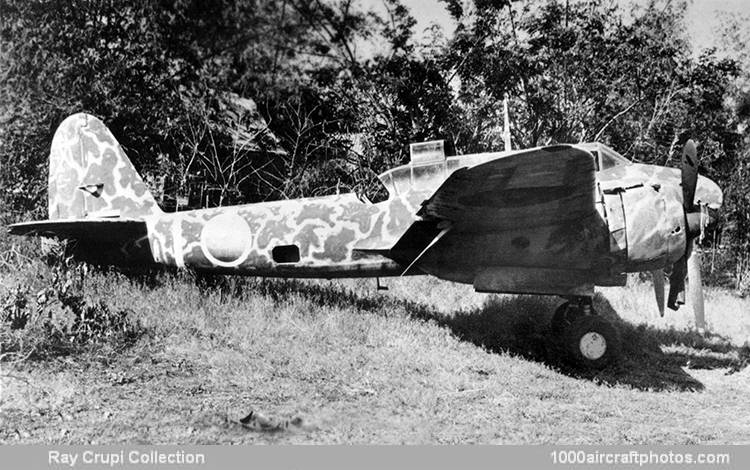06/30/2015. Remarks by Johan Visschedijk: "In December 1937, Kawasaki was ordered to begin work on a twin-engined two-seat fighter which was assigned the IJAAF Kitai (aircraft) designation Ki-45. Stemming from an earlier design study (the Ki-38), the Ki-45 was of all-metal construction with a stressed-skin semi-monocoque fuselage, semi-elliptical wings and a manually retractable landing gear. It was powered by two Nakajima Ha-20-Otsu nine-cylinder radial engines rated at 820 hp at 11,480 ft (3,500 m). Designed by Takeo Doi, the Ki-45 was armed with a 0.787 in (20 mm) cannon and two 0.303 in (7.7 mm) machine guns firing forward and a flexibly-mounted 0.303 in (7.7 mm) weapon for rear defense. The first of three prototypes was flown in January 1939.
Numerous problems were encountered, one of the most serious being excessive engine nacelle drag. In an attempt to reduce this, the third prototype, completed in May 1939, featured close-cowled engines with ducted spinners. This aircraft also featured an electrically-operated landing gear. Serious engine nacelle stall and disappointing performance led to curtailment of work on pre-series aircraft until April 1940. At this time work was resumed and eight further aircraft were built under the so-called "Phase I Performance Improvement" program. These aircraft were powered by Nakajima Ha-25 fourteen-cylinder radials each offering 1,050 hp and housed by redesigned nacelles, flight testing commencing in July 1940. In the meantime, on his own initiative, Takeo Doi began an aerodynamic reappraisal and a complete structural redesign of the fighter which was to result in an essentially new design.
Although possessing little more in common with the original Ki-45 than a similar configuration, Takeo Doi's redesigned fighter retained the original Kitai designation with the added suffix KAI (indicating Kaizo, or Modified). By comparison with the earlier fighter, the Ki-45-KAI had a reprofiled fuselage of reduced cross section, entirely new tail surfaces, a straight-tapered wing in place of the semi-elliptical planform, increased fuel capacity and heavier armament. The Ha-25 engines were initially retained and the first Ki-45-KAI prototype was completed in May 1941. Two further prototypes and twelve pre-series aircraft followed, all of which were delivered by the end of the year. Satisfactory flight testing led to adoption of the fighter as the Type 2 Two-seat Fighter Model Ko (Ki-45-KAI-Ko), the name Toryu (Dragon Slayer) later being applied.
The initial model carried a fixed forward-firing armament of one 0.787 in (20 mm) cannon and two 0.50 in (12.7 mm) machine guns, a 0.312 in (7.92 mm) gun being provided for rear defense. A variant optimized for ground and anti-shipping attack, the Ki-45-KAI-Otsu, featured revised forward-firing armament which comprised one 0.787 in (20 mm) cannon and a hand-loaded 1.46 in (37 mm) cannon. Later production of this version switched to the Mitsubishi Ha-102 rated at 1,080 hp for take off. This engine was standardized by the next model, the Ki-45-KAI-Hei, intended primarily for the nocturnal intercept role. This had armament of one forward-firing semi-automatic 1.46 in (37 mm) cannon, two 0.787 in (20 mm) cannon mounted to fire upward at an oblique angle and a 0.312 in (7.92 mm) gun for rear defense.
An anti-shipping version, the Ki-45-KAI-Tei, supplemented the forward-firing 1.46 in (37 mm) cannon with two 0.787 in (20 mm) cannon and also carried two 551 lb (250 kg) bombs. A half-dozen Toryus were each fitted with a hand-loaded 2.95 in (75 mm) cannon for the dual bomber intercept/shipping attack role. The last Toryu (a Ki-45-KAI-Hei) was completed in July 1945, bringing total production to 1,691 aircraft, excluding prototypes. A proposed further development, the Ki-45-II, evolved into the single-seat Ki-96."
